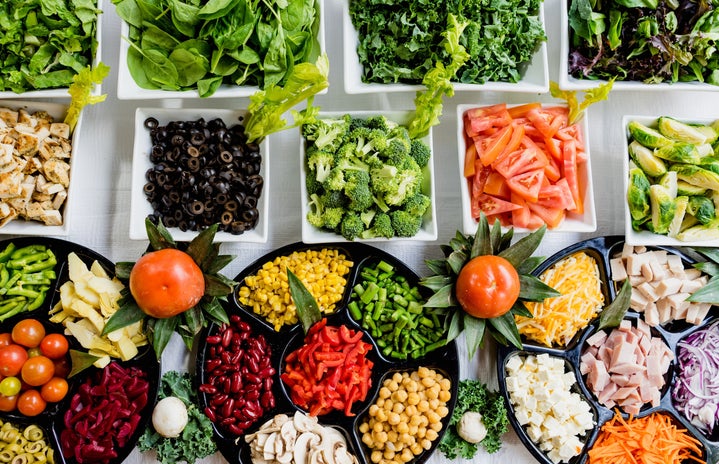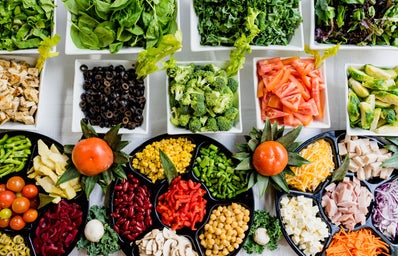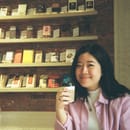Growing up, I always worried about having friends over for dinner. From elementary to high school, inviting friends into my home to eat with my family was stressful. They would ask a lot of questions: What is that? What’s that smell? Is it going to be like, normal chicken or your kind of chicken? It mostly ended with them having soy sauce poured over white rice and my mom doting over them, worried that they barely ate, not wanting to send them home hungry. Friends always thought my mom was adorable, citing her stilted English and warm smile, even though her food was never up to their standards.
These days though, eating with friends is made easier by Asian food’s new image. Asian food, along with its culture, aesthetic, and language, has become trendy. You always know something is at its peak level of trendiness when white entrepreneurs pounce on it. Recently, health coach and influencer Arielle Haspel, became the latest in a long-line of white people to declare that they can do Asian food better than Asians. Of course, that’s not how she pitched her new fast-casual Chinese restaurant, Lucky Lee’s. Instead, she pitched Lucky Lee’s as “clean” Chinese food. Since removed Instagram posts from the restaurant’s account had captions like, “We heard you’re obsessed with lo mein but rarely eat it. You said it makes you feel bloated and icky the next day? Well, wait until you slurp up our HIGH lo mein. Not too oily. Or salty.”
The Lucky Lee’s storefront, as seen on their Instagram
Despite finding Americanized Chinese food so oily and unhealthy, Haspel obviously still finds its aesthetic and language fun. Most of the menu items are like the “high lo mein,” puns on Chinese food names that Haspel thought would be “cute.” Lucky Lee’s logo is a play on chopsticks surrounded by bamboo. They use those takeout boxes that fold out, commonly associated with Chinese takeout. In defending the restaurant, Haspel told Eater about all the “lucky bamboo” and jade she used to decorate the place with. After getting dragged on the internet by countless people, they posted first an explanation then later, an apology on Instagram ahead of the restaurant’s opening. Haspel writes that, “[she] was naive and [is] sorry.”
After all the backlash and advice from Chinese Americans, they will change the offensive “verbiage.” Haspel and her husband cite their inspiration for opening Lucky Lee’s, the Chinese takeout from their childhoods. What stood out though was in the first post where they claimed, “When we talk about our food, we are not talking about other restaurants, we are only talking about Lucky Lee’s.” Lucky Lee’s can claim that in their marketing of “clean” Chinese food, they only meant to speak on their own food, but people know better. The implication of opening a “clean” Chinese place is clear: The Others are dirty. Haspel may think she’s creating a new business, filling some kind of neglected demand, but she’s not. The idea of needing to clean or make Chinese food healthy is not new or original or special. It’s a long on-going chapter of racism in a largely white food industry.
The big scary ingredient that scares people off of Chinese food, MSG, has yet to actually be proven as harmful. In fact, the perpetuation of MSG’s harmful health effects and the idea that Chinese takeout is incredibly harmful, has a lot more to do with prejudices diners may have against ethnic foods. The disdain for greasy Chinese takeout has always been less of a health issue, and more of an image problem. Many restaurant’s like Lucky Lee’s love using the fun, “cute,” bits of Asian culture. Even just the word Lucky is coded and overused. Besides Lucky Lee’s, there’s also recently been Gordon Ramsay’s Lucky Cat (their signature drink: the Lucky Geisha, made of sake, yuzu, and egg whites topped with a portrait of an exotic Asian woman), and Andrew Zimmerman’s Lucky Cricket. The only really new thing these kinds of whitewashed places bring to the menu are all trendy minimalist graphics and mixing of generally Asian aesthetics. But these white chefs will cite again and again all the time they’ve spent immersed in Asian culture. Gordon Ramsay not only travelled throughout Asia but has his series Uncharted where he shows “locals he can cook their cuisines better than they can.”
One of the cocktails at Ramsay’s Lucky Cat
White restauranteurs and chefs can claim all they want that they know Asian culture, that they respect it, grew up with it, traveled through it, know it better than locals, love lucky bamboo and jade, or whatever. But at the end of the day, they get to walk away from it whenever they want. They get to move on whenever the next new trendy cuisine comes up. They never invited friends over, only for their homecooked food to be gawked at or picked apart. They never brought lunch from home and had their peers laugh. They don’t get to reinvent something that was never theirs in the first place.
Lots of young Asian American chefs are already meeting the health standards Haspel thinks she’s pioneering. Doron Wong, a chef at the Northern Tiger, told the New York Times that Asian chefs are also “very aware of what [they] are putting into other people’s bodies.” As annoying and disrespectful places like Lucky Lee’s/Cat/Cricket are, I want to make clear, I don’t think this kind of cultural crossover is forbidden. As chef Eddie Huang said in response to Lucky Lee’s, “it’s an attempt at the ancient Chinese art of bootlegging.” Asians take from other cultures all the time, everyone does. It’s just part of living in the world today, one that is irreversibly globally connected. But know your place, look at who you’re taking from, and then decide if it’s really yours to take.


